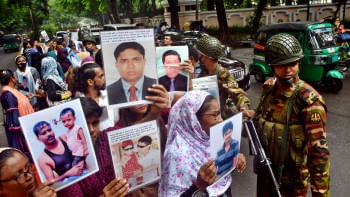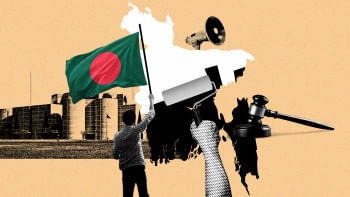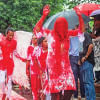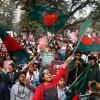Gono Bhaban shouldn’t be turned into a museum

On September 5, the interim government announced the decision to turn Gono Bhaban (the prime minister's residence) into a museum to preserve the memories of the July mass uprising. While the intention to commemorate the martyrs of the movement is highly admirable, the specifics of converting the prime minister's residence into a museum should be considered very carefully.
If we turn the prime minister's residence into a museum, where will the next prime minister reside? We must keep in mind that the head of state cannot be expected to live just anywhere. Wherever the new residence will be located, it will need to have the supporting infrastructure. This includes the surrounding roads and the ability to secure the area. If the new residence is in a densely populated area, the necessary security measures could disrupt the lives of local residents. And this issue must also be considered.
There is also the matter of the museum itself. For a museum to have cultural significance, it needs to be accessible. Although the museum will technically be open to all, the location of Gono Bhaban is not particularly friendly for public access. To ensure proper use, public transportation and other accessibility issues must be addressed, and a feasibility study is necessary to determine whether the general public will be interested in visiting the museum.
On August 5, following Sheikh Hasina's resignation and flight to India, tens of thousands of people marched to Gono Bhaban, leading to chaos. Initially, people took everything in sight, which soon escalated to breaking and damaging property. The interim government intends to preserve this damaged state as the primary display, making minimal changes and leaving it open to the public.
This raises a significant issue. The July mass uprising was a non-violent movement from the people's side. Students and ordinary protesters repeatedly emphasised their commitment to non-violence. The clashes and property damage were rejected by the movement, with the violence coming from the government and the Awami League.
On August 5, however, there were some incidents of mob violence as well, which became apparent only after Sheikh Hasina had already resigned and left the country. Although the initial storming of Gono Bhaban provided some comic relief, the subsequent increase in violence, chaos, and destruction became a major concern. This spread throughout Dhaka and the rest of the country—leading to government offices, cars, and homes of former government officials getting damaged. Vandalism became widespread, and images of the damage to the parliament hurt many people's sentiments.
So, the question arises: Why should we use this symbol of destruction to remember the movement? Doesn't this validate the violence that followed the success of overthrowing the Hasina regime? This approach sends the wrong message about what should be remembered and undermines the spirit of the peaceful protest that united students, parents, teachers, and people from all walks of life.
Museums and memorials are essential, especially for a movement as significant as this. We need to honour it properly and create memorials for those who had sacrificed their lives. However, we must be careful about how we do this. The message conveyed through museum displays has long-lasting implications. Children who visit it will remember more from what they see than from what is told to them. The destruction being considered for display is perhaps not the best message to share with this next generation. While the intention may be to serve as a warning to future rulers, there are surely better ways to achieve this.
Perhaps a new museum or memorial, similar to the Shahid Minar, could be constructed. It could be something original and serve as a future gathering point for protests, much like Raju Bhashkorjo, Shahid Minar, and Shahbagh. Trees could be planted in memory of each life lost during the protests, symbolising the importance of sustainable reform through their growth and care.
A committee has been formed to help with transforming Gono Bhaban into a museum. It would be prudent for the committee to first consider whether a new museum or memorial might be a better option than using Gono Bhaban. Turning Gono Bhaban into a museum means significant expenditure on a new residence for future prime ministers. Shouldn't we consider using the funds directly for a new museum instead?
Monorom Polok is a member of the Editorial team at The Daily Star.
Views expressed in this article are the author's own.
Follow The Daily Star Opinion on Facebook for the latest opinions, commentaries and analyses by experts and professionals. To contribute your article or letter to The Daily Star Opinion, see our guidelines for submission.

 For all latest news, follow The Daily Star's Google News channel.
For all latest news, follow The Daily Star's Google News channel. 











Comments